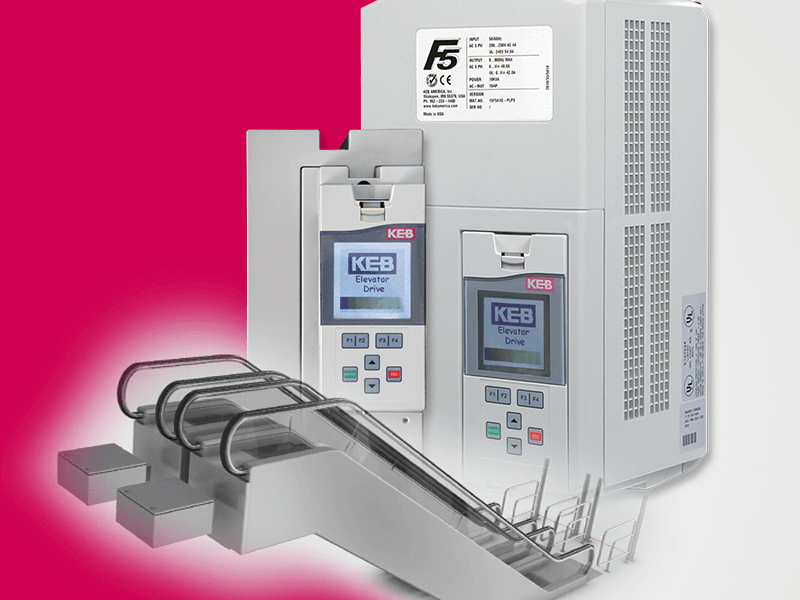Elevator safety is a top concern for all involved with the industry. In order to ensure the safety of passengers and maintenance personnel, most countries have adopted some sort of elevator code that specifies a large number of safety functions that an elevator must have. In Europe, the current standard that is being used for elevators is the code EN 81-20:2014 for passenger elevators. This safety code covers the entire system and what types of safety devices are required. One section of this code – 5.6.7 specifically – pertains to unintended car movement (UCM) of the elevator car after a normal run. This post describes how a KEB Elevator drive can be used to meet the intent of the UCM code.
When an elevator has finished its normal run and come to a stop at the floor desired, you want to ensure that it doesn’t move while passengers are getting on or off. You also want to make sure that the brakes you are using to hold the car in place are functioning properly so that if the car does move unintentionally, it can be stopped before it moves too far and someone is hurt. It is possible to use a KEB drive to monitor the movement of the car as well as make sure the brakes are working properly.

The elevator code in Europe that was mentioned in the introduction specifies that two separate brakes are required to hold the car in place in the event of unintended motion. Most elevators have a main brake and an emergency brake. This provides redundancy in case one of the brakes fails so that in the unlikely case that there is an unintended movement of the car and one brake stops working, the car will still stop and the passengers will be safe.

Brake Monitoring
Part of making sure that the elevator is safe is monitoring the brakes to make sure that they are opening and closing when appropriate. The KEB F5 drive can monitor both the main machine brake and the emergency brake when two of the inputs are configured for brake monitoring. The brake monitoring function on the drive uses an input that comes from the brake to verify that the brake is in the correct position. If the drive detects a failure based on the input, then it will trigger a fault and prevent further operation of the elevator until the failure is fixed. This helps to ensure that the elevator will not be used by anyone if a brake has failed. Using the F5 drive, you can set the fault response such that the elevator cannot move until a qualified maintenance person has physically reset the fault and fixed the condition that caused the fault.

Position Detection
Unfortunately, you can’t schedule unintended movement because it is unintentional. What elevator safety codes specify is to try to mitigate any potential issues that might be caused by unintended movement. Imagine an elevator that has come to a floor and passengers are getting on and off. If the car were to move suddenly, it could cause major problems if it were not stopped in short order. The KEB F5 drive can monitor the position of the elevator, and if it detects movement when the car should be stopped, it will trigger a fault that causes the brakes to drop and holds the elevator in place. The drive uses the motor encoder to determine if the motor has turned while it should be stopped. If the motor moves a certain distance, then the drive will trigger a fault and prevent any further operation of the elevator. As with the brake monitoring, you can adjust the response to this fault so that the elevator cannot be run until a qualified maintenance person has reset the fault and made sure that the conditions are safe. This ensures that if the elevator does move when it shouldn’t, it will be stopped after a short distance and further operation will be prevented until the situation has been fixed.

When you step into an elevator, there is an expectation that the elevator will get you to your destination safely. KEB is committed to helping that happen, striving to offer a high-quality elevator drive with functions that can improve the quality and safety of the elevator. The brake monitoring and unintended movement functions are two options that KEB offers as a part of the elevator drive to help ensure safety throughout the process of an elevator ride.
These safety functions are designed to meet the intent of EN 81-20:2014 section 5.6.7 but have not been certified by a third-party and functionality must be tested according to documented procedures to ensure the safety of the elevator. Elevator manufacturers will want to ensure that the elevator matches the code for the jurisdiction of the elevator.
Let's Work Together
Connect with us today to learn more about our industrial automation solutions—and how to commission them for your application.





